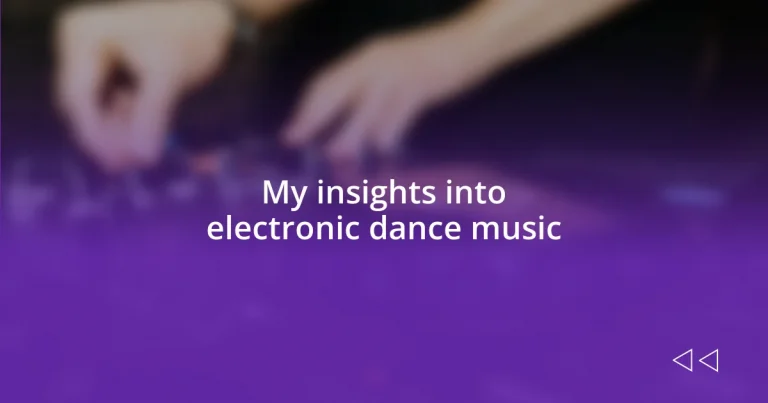Key takeaways:
- EDM encompasses various styles like house, techno, and trance, uniting people through powerful beats in a club atmosphere.
- Technology plays a crucial role in EDM production, often using synthesizers and digital audio workstations, allowing creators to manipulate sound.
- EDM’s evolution from underground roots to mainstream popularity raises questions about commercialization and its impact on the genre’s original spirit.

Understanding electronic dance music
Electronic dance music, often referred to as EDM, encompasses a broad range of styles and subgenres, from house to techno to trance. I remember the first time I stepped into a club with thumping beats that reverberated through my entire body. It was electrifying! The way the music melds with the energy of the crowd creates an atmosphere that’s almost palpable, isn’t it? It makes you wonder how a simple beat can unite so many people in one moment.
What’s fascinating about EDM is its reliance on technology. Tracks are often created using synthesizers, drum machines, and digital audio workstations, blurring the lines between musician and producer. I recall experimenting with music software in my basement, attempting to replicate those gripping sounds. The realization that I could manipulate sound and create something others could dance to was both overwhelming and exhilarating.
Another intriguing aspect is how EDM has evolved over the years. It has roots in the underground scene but has now infiltrated mainstream music, drawing in artists from various genres. Sometimes, I find myself pondering whether the commercialization dilutes the original spirit of the music. Yet, there’s something beautiful about witnessing its growth while also appreciating its underground origins. How do you feel about that balance?














